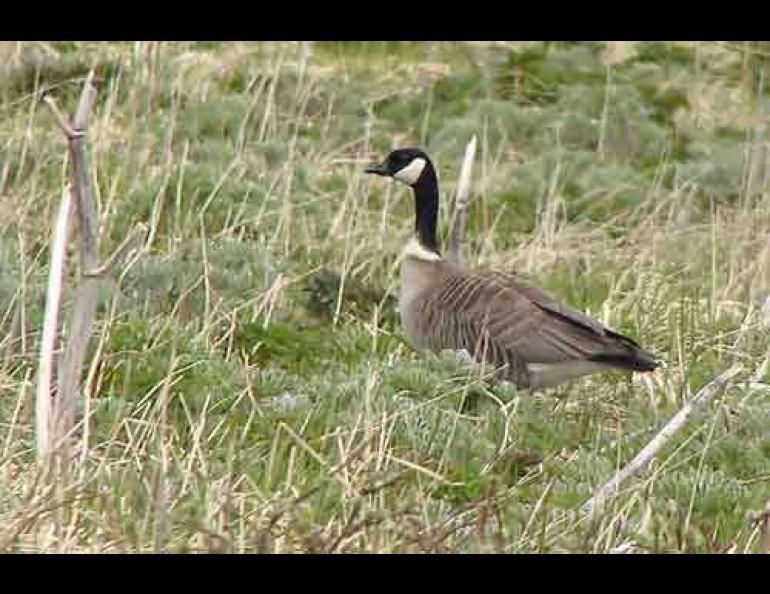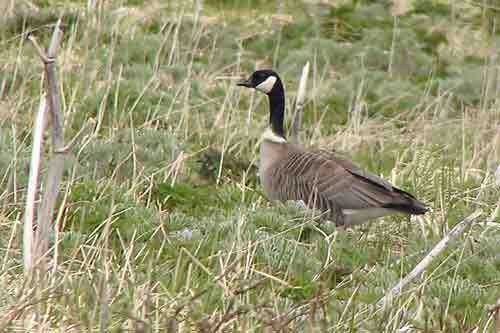
An Aleutian cackling goose on Attu Island. Steve Ebbert photo.
Bits and pieces from the desktop
From time to time, pieces of Alaska science news find their way to my desk but don’t emerge as a full newspaper column. Here’s a sampling.
- Aleutian goose continues comeback: The Aleutian cackling goose, formerly known as the Aleutian Canada goose, has recovered so well from near-extinction that officials in Oregon—where the smaller cousin to the Canada goose spends the winter—have taken the bird off the state’s endangered species list. Biologists recently counted more than 64,000 birds in Oregon. In 1962, Alaska biologist Bob “Sea Otter” Jones found a few hundred birds on Buldir Island in the western Aleutians when others thought the goose was extinct. The removal of foxes from the Aleutians and the closure of hunting season on the birds’ wintering grounds helped their recovery.
- Alaska almost knocked off No. 2 earthquake perch: Some scientists calculated that the recent Sumatra earthquake that caused the tsunami had a magnitude of 9.3, which would top Alaska’s Good Friday earthquake’s 9.2. The scientists who calculated the 9.3 used a model with incorrect fault geometry, though. A more correct number for the Sumatra earthquake is 9.15, according to Thorne Lay of the University of California at Santa Cruz, who had a paper on the earthquake published in a special edition of Science that featured the great Sumatra-Andaman Earthquake of May 20, 2005. A Harvard researcher, Meredith Nettles, also calculated that the Alaska earthquake was larger than the Sumatra earthquake. The death toll from the Sumatra earthquake and tsunami was more than 283,000, according to the U.S. Geological Survey. The Alaska earthquake of 1964 killed 131 people, in Alaska, California and Oregon.
- DEET delivers: A scientist who studies Alaska seabirds that give off mosquito-repellant chemicals sent me a paper from The New England Journal of Medicine that was published in 2002, but had some good bug-related information I had missed. Researchers at the University of Florida compared commercial repellants on mosquitoes they breed at the Florida Medical Entomology Laboratory. Deep Woods OFF!, with a 23.8 percent mixture of the chemical DEET, “provided an average of five hours of complete protection against (mosquito) bites after a single application.” Mark Fradin and John Day, who co-authored the study, wrote “only products containing DEET offer long-lasting protection after a single application.” They also tested Skin-So-Soft Bath Oil, and found it provided an average of 9.6 minutes of protection. Of DEET alternatives, the most effective was a soybean-oil-based repellant that worked for about 1.5 hours. They noted that repellants don’t work beyond 4 centimeters from the site of application, and that garlic, vitamin B1, and wearable devices that emit sounds don’t seem to work. The authors also wrote, “DEET has a remarkable safety profile after 40 years of use and nearly 8 billion human applications. Fewer than 50 cases of serious toxic effects have been documented in the medical literature since 1960.”





